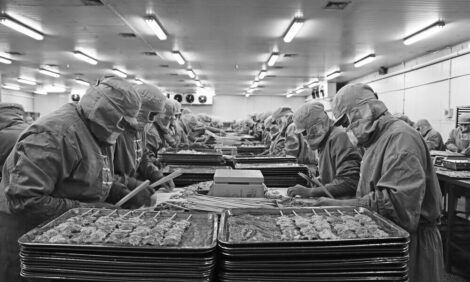



EU Dairy Market Adjusting to Quota Removal
EU - Following the end of milk quotas in the EU, milk production is expected to rise by just one per cent this year.According to the latest Short-Term Outlook for EU arable crops, dairy and meat markets in 2015 and 2016, production increased strongly following the removal of the quotas on 1 April.
But the prices in other countries are not encouraging production.
The ban on imports of dairy produce from the EU into Russia in retaliation over the sanctions imposed because of the Ukraine crisis has seen more milk going to skimmed milk powder and less into cheese and butter.
In the dairy sector, despite quota expiry, milk deliveries are expected up by just 1 per cent in 2015.
In some Member States milk production increased strongly from 1st April 2015, while in other countries milk prices are not providing sufficient incentive. With the continuation of the Russian import ban, more milk is channelled into SMP and butter and less in cheese.
EU dairy commodity prices rose at the start of the year mirroring the rise in world prices, but the recovery faltered and started falling in the second quarter of the year as production rose in both the EU and the US. At the same time the drought in New Zealand did not materialise and the demand seen earlier in the Chinese market started to fall away.
A fall in prices in SMP, butter and Cheddar has stopped but is continuing for whole milk powder, whey, Gouda and Edam.
Last month the average EU SMP price was €180/100kg – 40 per cent down on last year. WMP prices at €240/100kg are 30 per cent down on last year.
While the drop prices paid to farmers is declining, it is still on a downward spiral.
The EU average milk price, at €30.48/100 kg in May, was 19 per cent below last year.
The greatest falls have been in the Baltic countries where it is down to under €25/100kg, but in Finland, Italy, Austria, the United Kingdom, Portugal, France and Poland the drop in prices has been around 15 per cent – still bringing some to under €30/100kg.
In the run up to the removal of quotas, the amount of milk coming on to the market fell in the first three months of the year, most notably in Cyprus, Ireland, Estonia, Belgium, Austria, the Netherlands, Latvia, Italy, Germany and Denmark. There was also a slowdown in milk deliveries in the UK.
Despite low prices, some EU countries put on a surge in production following the removal of quotas in April, particularly in Ireland, Austria, Luxembourg, Poland and Spain and since May the Netherlands.
The report says: “Farmers had adopted different strategies to reduce deliveries prior to quota expiry.
“For many a priority was not to damage the herd potential in order to expand rapidly production as of the 1 April 2015.
“Among other possibilities, farmers ended cows’ lactation period earlier and postponed the calving season.”
EU farmers put in place plant to increases the herd ahead of milk quota expiry, with a view to long-term opportunities on the world market.
At the end of last year, the number of dairy cows in the EU-15 was about one per cent higher compared to 2013, with significant increases recorded particularly in Ireland (up 4.2 per cent) and the United Kingdom (up 3.6 per cent).
Very good forage conditions have contributed to an expansion in milk production recently, particularly in countries where cows are mainly grass-fed.
Germany and France, which have about 40 per cent of the milk that goes onto the EU market are not expected to see strong increases in production because of the current prices.
Sweden and Belgium are expected to place less milk on the market and there will only be limited increases in the UK and Italy. Spain, which is having problems with processors, could put less milk on the market this year, the outlook report says.
It predicts that next year will see only a modest increase of about one per cent, particularly if the Russian ban continues.
There is expected to be a higher consumption of dairy products this year and this is particularly being seen in an increase in cheese production, which will grow by 0.5 per cent.
With declining cheese prices and a recovery in economic growth, the per capita cheese consumption could increase by 1.7 per cent in 2015.
Despite the Russian ban and a decline in exports to some counties including China, total EU dairy exports are expected to rise by about two per cent with strong growth in the Middle East in particular Oman and Saudi Arabia.



